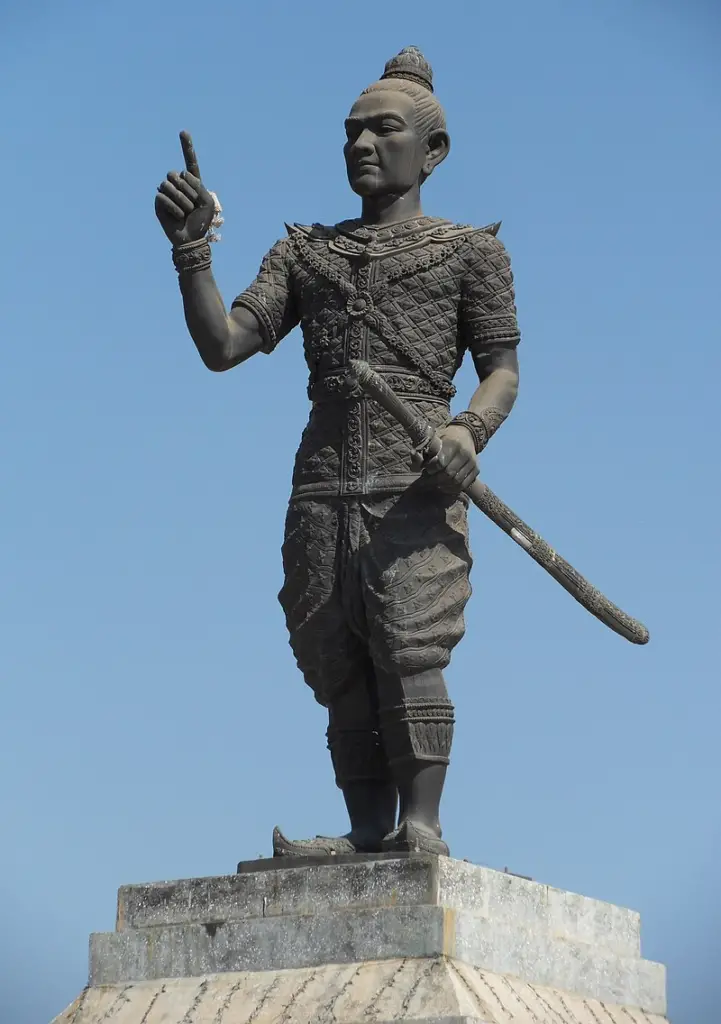10 Unsolved Puzzles of the Africa and Asia’s History
“Hey! Have you ever wondered about the ancient pyramids of Nubia, or the lost city of Ubar? Or maybe you’ve been curious about the Indus Valley Civilization and the Harappa Civilization, and what secrets they might hold. If you’re fascinated by unsolved mysteries and the unknown, then you’re in for a treat. In this article, we’re going to explore 10 of the most intriguing unsolved puzzles of Africa and Asia’s history. From disappearing lakes to ancient civilizations, these mysterious discoveries will take you on a journey through the unknown and leave you wondering about the secrets that still remain unsolved.

As we delve into the uncharted territories of history, we’ll uncover the secrets of the past and explore the mysteries that have captivated researchers and history enthusiasts for generations. From the Nubian pyramids to the lost city of Ubar, these unsolved puzzles will leave you questioning the limits of human knowledge. Whether you’re a history buff or just have a general interest in unsolved mysteries, this article will take you on a journey through the unknown, leaving you wanting to know more.”
1. Disappearing Lake of Chala
The disappearing lake of Chala is located in Kenya and is known for its unusual behavior of disappearing and reappearing without explanation. The lake is situated on the border of Kenya and Tanzania and is fed by underground streams that are connected to a larger water system.
Scientists believe that the disappearing and reappearing of the lake is caused by changes in the water levels of the underground streams. When the water level in the underground streams is high, the lake will fill up and appear. When the water level in the underground streams drops, the lake will disappear. The lake has been observed to disappear and reappear several times in the past, and it is believed that this behavior is a natural process that has been going on for thousands of years.

2. The Nubian pyramids
The Nubian pyramids are a group of ancient pyramids located in what is now modern-day Sudan. These pyramids predate the more well-known Egyptian pyramids and were built by the rulers of the Kingdom of Kush, which existed in the region between around 800 BC and 350 AD.

Unlike the Egyptian pyramids, which were built as tombs for pharaohs and their consorts, the Nubian pyramids were primarily built to serve as monuments to the kings and queens of Kush. They were also used as places of worship and were often decorated with intricate carvings and inscriptions. Despite their historical significance, many of the Nubian pyramids have not been fully explored or understood due to a lack of funding for archaeological research in the region.
3. Indus Valley Civilization
The Indus Valley Civilization was an ancient civilization that existed in present-day Pakistan and northwest India around 2500 BCE. This civilization is known for its advanced urban planning and engineering, as well as its sophisticated system of writing, which has yet to be deciphered.

The Indus Valley Civilization is known for its well-planned cities, with straight roads and advanced drainage systems, as well as impressive public structures such as granaries, public baths, and large assembly halls. However, despite the many achievements of this civilization, much about its culture and society remains a mystery.
Scholars have yet to decipher the Indus script, which would provide valuable insight into the civilization’s religious beliefs, political structure, and daily life. Additionally, the Indus Valley Civilization’s abrupt disappearance remains an enigma, and their legacy is not as well-known as other ancient civilizations such as the Egyptians or Mesopotamians.
4. Mohenjo-Daro
Mohenjo-Daro is an ancient city of the Indus Valley Civilization that existed in present-day Pakistan around 2600 BCE. This city is known for its advanced urban planning and engineering, as well as its sophisticated system of writing, which has yet to be deciphered.
Mohenjo-Daro is known for its well-planned city layout, with straight roads, advanced drainage systems, and impressive public structures such as granaries, public baths, and large assembly halls. However, despite the many achievements of this civilization, much about its culture and society remains a mystery. Scholars have yet to decipher the Indus script, which would provide valuable insight into the civilization’s religious beliefs, political structure, and daily life.

Additionally, the Indus Valley Civilization’s abrupt disappearance remains an enigma, and their legacy is not as well-known as other ancient civilizations such as the Egyptians or Mesopotamians. Mohenjo-Daro is also one of the most well-preserved cities of Indus Valley Civilization, which makes it a popular tourist destination and an important site for archaeologist to study.
5. The lost city of Ubar
Ubar, also known as the “Atlantis of the Sands,” is a lost city that is believed to have existed in the Arabian Peninsula. According to legend, it was a wealthy and powerful trading hub that was eventually swallowed up by the desert sands, disappearing without a trace. The exact location of Ubar has never been found and the city is considered as one of the most enigmatic and elusive ancient sites.
For centuries, Ubar has been the subject of much speculation and many expeditions have been launched to find the lost city. Some historians believe that Ubar was located in what is now Oman. While others think it may have been in Yemen or Saudi Arabia.

In recent times, using satellite imagery and other modern techniques, several archaeological expeditions have been launched to locate the city, and some evidence has been found that suggests the city was located in Oman’s southern desert region. Despite these discoveries, the location of the city has not yet been confirmed and much of its history and culture remains a mystery.
6. The unexplained death of Laotian King Fa Ngum in 1479 AD
Fa Ngum was a Laotian king who lived in the 15th century AD. He was one of the most successful Laotian kings of his time and is best known as the founder of the Lan Xang kingdom, which existed in present-day Laos and parts of Thailand, Vietnam, and Cambodia. Under his rule, the kingdom experienced a period of prosperity and expansion, and Fa Ngum is considered to be one of the most important figures in Laotian history.

However, the death of Fa Ngum remains a mystery. According to historical records, he died in 1479 AD, but the cause of his death is not known. Some historians believe that he may have died from natural causes, while others suggest that he may have been assassinated. However, there is no concrete evidence to support any of these theories and the true cause of Fa Ngum’s death remains a mystery. Despite this, he is still remembered and celebrated in Laos as a great king and a national hero.
7. The Ife heads
The Ife heads are a collection of terracotta sculptures that were discovered in Nigeria and are believed to date back to the 12th century. These sculptures are known for their striking realism and attention to detail and are considered to be some of the finest examples of African art from the pre-colonial period. They were discovered in the 1930s and are believed to have been created by the ancient Yoruba people, one of the most advanced civilizations of the time in West Africa.

The purpose and meaning of the Ife heads remain unclear. The sculptures depict human heads and busts, and they have been found in the ruins of palaces and shrines, suggesting that they may have had religious or ceremonial significance. However, the exact meaning and significance of the sculptures is not known, as the civilization that created them has no written records, and the sculptures have not been found in context.
Researchers have speculated that they may have been used in ancestor worship or that they might have been ritual objects or portrait of the leaders of the ancient Yoruba society. Despite this lack of clarity, the Ife heads are considered to be one of the most important and enigmatic ancient artifacts from Nigeria and Africa and continue to attract the attention of scholars and art lovers alike.
8. The Voynich Manuscript
The Voynich Manuscript is a medieval book that has puzzled scholars and cryptographers for centuries. It is written in an unknown script and cipher, and the meaning and purpose of the text is still a mystery. The book is believed to have originated in Central Asia or Northern India and it’s believed to have been created in the 15th century. It is filled with illustrations and diagrams that are equally as mysterious as the text, and many experts believe that it may be a kind of code or encryption.

The Voynich Manuscript has been studied by many experts over the years, including linguists, cryptographers, and historians, but despite their best efforts, the book’s secrets remain unsolved. Some experts believe that it could be an encoded recipe for a medieval elixir, a secret code used by a religious group, or even an elaborate hoax. Many theories have been proposed, but none of them has been able to fully decode the manuscript. The Voynich Manuscript remains one of the most intriguing and perplexing artifacts of medieval history and continues to capture the imagination of experts and enthusiasts alike.
9. The Umm al-Hiran incident
The Umm al-Hiran incident refers to an event that occurred in January 2017, when Israeli authorities demolished the Arab Bedouin village of Umm al-Hiran in the Negev desert. The village had been home to Bedouin citizens of Israel for decades, but the government had plans to build a Jewish town in its place, known as Hiran.

During the demolition, a villager named Yaqoub Abu al-Qiyan was shot and killed by police, who claimed he had carried out a car-ramming attack against them. However, many eyewitnesses and human rights groups disputed this claim, saying that Abu al-Qiyan had been driving his car normally when he was shot. The incident led to widespread condemnation and raised questions about the Israeli government’s treatment of its Arab citizens, as well as the legality and morality of demolishing the village.

10. The unexplained phenomenon of the Min Min lights
The Min Min lights are a mysterious phenomenon that have been reported in the Outback of Australia for over a century. They are described as bright, hovering lights that appear in the night sky and often move around in seemingly random patterns. Many people who have witnessed the lights describe them as being very strange and difficult to explain. Despite being reported for many years, the exact cause of the Min Min lights remains a mystery.

Some people believe that the lights are caused by a natural phenomenon, such as the reflection of light off of clouds or the ionization of the air. Others think that the lights may be caused by something more mysterious, such as UFOs or ghosts. However, there is currently no scientific evidence to support any of these theories, and the true cause of the Min Min lights remains unknown. Despite this lack of explanation, many people continue to be fascinated by this mysterious phenomenon and make the journey to see it for themselves.


Pingback: Eva Braun: Hidden Life with Hitler Uncovered - Flashing History Mystery